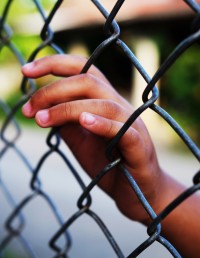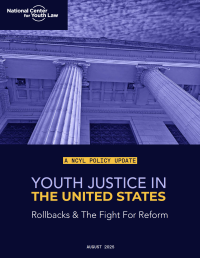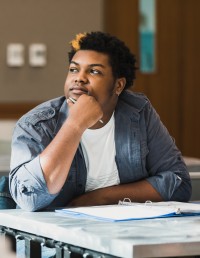Just Doing Their Job? The Structural Roots of Police Abuse
Originally published at https://www.impactfund.org/
I recall my first contact with police as a middle schooler. Two of my friends and I, all Black youths, were walking in our neighborhood. San Francisco's Richmond district was diverse but mostly White then. It was a dark early evening. As the three of us were walking, a police car pulled up. The officers ordered us to empty our pockets. They searched us without asking for permission or explaining why they had stopped us. Finding nothing illegal, they departed without explanation or apology. We knew they had stopped us because we were Black. To them Black kids in a “White neighborhood” was synonymous with suspicious. They didn't beat us or kill us. So the physical toll was light, but the psychological effects were deep. Afterward we had to question if the police would protect and serve us.
The Black Lives Matter movement has focused attention on police killings of Blacks. Indeed, many believed BLM was bringing about some meaningful changes in the way police engaged Black communities. Then Alton Sterling was killed in Baton Rogue, and Philando Castile was killed in Minnesota, and we all were left wondering: why does this familiar pattern keep repeating? I believe the answer is the role law enforcement plays within Structural Racism.

Structural Racism is the combination of historical, cultural, institutional and interpersonal forces that routinely advantages Whites while producing cumulative and chronic adverse outcomes for people of color. Historically, this country claimed to be founded on the ideals of freedom and liberty. Needing to justify the inherent contradiction the African slave trade posed to those founding ideals, the artificial notion of race was used to rationalize the enslavement and horrific treatment of Africans.
The methods that were employed to convince everyone of this racial myth (i.e. there are racial groups that can be scientifically distinguished, and those racial groups naturally fall into a hierarchy with Whites on top and Blacks on the bottom) were systematic and comprehensive (e.g. racist stereotyping, narratives, ideology, imagery and emotions). These methods are still with us today and “frame” how we interpret everything around us; they are ubiquitous yet rarely noticed. Since slavery, every aspect of American culture has been used to reinforce this racial hierarchy. Two examples are the films Birth of a Nation, which reinvented the history of the south employing the most vicious stereotypes of freed slaves, and Ethnic Notions, by Marlon Riggs, which depicts the countless ways Black stereotypes encroach into everyday life. Ta-Nehisi Coates shows how institutional forces work to discriminate against Black folks historically and today. These institutional forces, through the establishment of certain policies, fostered racial segregation in the US, and it remains so today.

Police abuse in the Black community is old news, as old as the institution of policing itself. Police serve as the guardians of the established order, protecting racialized borders. Since the precursor to the police, the slave patrol, chased down runaway slaves, the role of the police/patrol has been to keep Blacks “in their place” spatially and socially. They made sure Blacks stayed in spaces designated for them and ensured they didn't enter White-designated spaces. From the outset the patrol was authorized to use unlimited violence to accomplish its purpose. Since their creation, police have used extreme violence on Blacks, almost always with no negative repercussions. The White community has long had a Faustian bargain with police: they support the police when they do violent things to Black folks, and in exchange the police unfailingly protect and serve them. Because of the racial hierarchy built into Structural Racism, the mainstream White community goes along with these practices, believing them necessary to preserve their privilege. Of course, there have always been White allies who have stood with Black folks in our struggle for fairness. Recent videos demonstrating the callous treatment Black people receive from some police officers have also taken the scales off the eyes of many White people
Since slavery, identifying Blacks as the “other” was crucial to the function of the police. So it's not surprising those officers stopped my friends and me because our Blackness equated with being suspicious. As long as we live in a country where life is viewed through society's Structural Racism, I think it's inevitable that we will continue to witness the killing of unarmed Black people by police. So we must struggle mightily to expose Structural Racism and bring it to an end.






